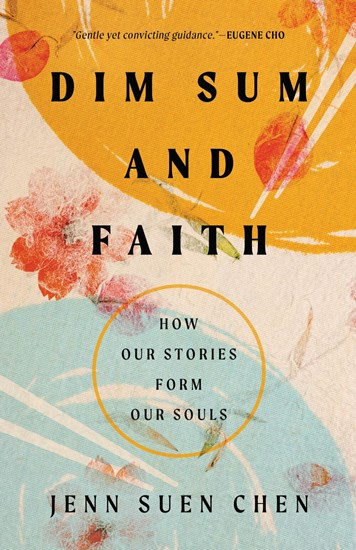
Discovering Your Voice
As we learn how to tell our story with God, our voice becomes our superpower and points people to Jesus. It’s not just about knowing our story; it’s about telling it with the voice we have been given.

A Novel Way to Battle Anti-Wokeness
There is a reason that Jesus instructs his followers, “Truly I tell you, unless you change and become like little children, you will never enter the kingdom of heaven” (Matthew 18:3). Once we become adults, our ability to embrace change and to open ourselves to new ways of thinking and living diminishes. But children have an inherent openness and malleability; with the exposure to the right kind of books, a child can be formed in ways that will last into adulthood.

Book Review: The New Testament in Color
So then, can I, as an Asian American, trust Scripture? According to the wonderful contributors of The New Testament in Color, the answer to that question is “Yes!” Yet, not only I as an Asian American can trust Scripture, so too can African Americans, Hispanic Americans, Native Americans, and others.
Book Review: Beyond Ethnic Loneliness
Living as a member of a marginalized community can be lonely and a source of grief, but Verma reminds us that we can find Jesus in the margins.
Raising the Bar: Loving Disagreement Book Review
The faith that helped our parents and our families survive in this country can sometimes be at odds with the growing faith of the younger generation that looks around and is asking, “How can my faith impact the world around me?” It’s a complicated question.
Telling Our Stories: Tell Me the Dream Again Book Review
Throughout her book, Jun continues to pull on the theme of coming home to yourself—and the way that journey looked for her uniquely as a biracial Korean woman growing up in the States.
Book Review: Preaching to a Divided Nation
In order to fix the divisions in our churches and our country, we not only have to understand what is broken but how it is broken.
Social Justice for the Sensitive Soul: A Pop-Psych Guide to Activism
“Finding your own way in social justice work requires courage, creativity, wisdom, and an openness to possibility. It requires shaking off the unhealthy and unrealistic expectations of others. It asks us to embrace our differences as beautiful and our unique personalities and perspectives as gifts, rather than comparing ourselves to others.”
Book Review: Passport to Shame: From Asian-Immigrant to American Addict by Sam Louie
Sam’s former profession as a storyteller is apparent as he vividly paints a picture as though you are there with him in his humble beginnings and follow him through his highs and lows.
8 Memoirs for AANHPI Heritage Month
For Asian American, Native Hawaiian, and Pacific Islander Heritage Month, we recommend picking up a book (or two) to help you learn about a perspective that may be unfamiliar to you, or perhaps makes you feel more seen in your own identify and experience.
Opening Our Hearts to Lament
Whenever a racial tragedy happens in our country or around the world for that matter, our posture of heart as a family is to first respond with lament. My family laments every time a life is lost because every person’s life has value and meaning.
Invisible Book Review
Invisible courageously offers full witness to the invisibility of Asian women and to a God who sees. Kim ultimately asks her reader to reimagine faith in the God who makes all visible, whose spirit is in all people, and whose reign never ceases–defining our today.
Book Review: Power Women: Stories of Motherhood, Faith, and the Academy
What if there was a way to see our different callings as women - as mothers, wives, academics, and ministry leaders - not as forces pulling us in different directions, but as a single effort working toward a common goal? That is, in many ways, the question that Power Women seeks to answer.
Book Review: Asian Americans and the Spirit of Racial Capitalism by Jonathan Tran
Cultivating an "Even If" Faith: An Interview with Mitchel Lee
Even if God's goodness to me didn't look the way that I thought it should, I'm going to worship him because he's worthy of worship.
AACC Summer 2021 Reading List
Inclusivity, Justice, and Asian Americans in Matt Mikalatos’ The Story King
A Biblical Guide to the Do’s and Don’ts of Cultural Appropriation
Redeeming the Body in Chronic Pain: An Interview with Liuan Huska
The Chinese American author discusses how fully embracing the reality of our embodiment, with all its hurts and vulnerabilities, can bring us closer to Christ.
Storytelling as Liberation
Third-generation Chinese American speaker and activist Nikole Lim shares how her family history and cultural identity shape her work advocating for survivors of sexual violence.
